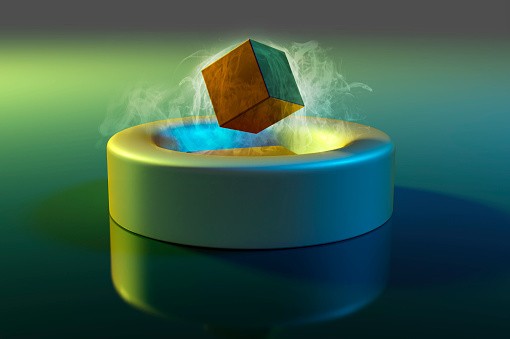
In a recent study, the potential of artificial intelligence was harnessed to develop super strong permanent magnets with iron-based superconductors.
Capabilities of Superconducting Magnets
A superconducting magnet is an electromagnet that can produce magnetic fields that are stable, very strong, and do not rely on large amounts of power supply. They have the potential to be used in a range of applications, such as MRI machines that need strong magnetic fields to create clear 3D images of soft tissue. They can also be harnessed for the next generation of transport, like magnetic levitated trains.
However, the currently used superconductors are mostly in the form of large coils of superconducting Nb-Sn alloy wire. This means that the technology needs traditional components which are usually expensive.
Such kinds of superconductors are used in bulk form which can take weeks to fabricate. To use them, devices need to accommodate this size, resulting in limited application.
Iron-based high-temperature superconductors can serve as materials in next-generation super strong magnets because of their remarkable topological and superconducting characteristics. However, they have unconventional high superconductivity features with short coherence lengths.
Creating Magnets With Exceptional Strength and Stability
In a recent study, a team of experts from King's College London developed a low-cost and powerful iron-based superconducting magnet using artificial intelligence. This unlocks the affordable and widespread use of the technology.
Led by Dr. Mark D. Ainslie, the research team used machine learning to make a cost-effective and scalable alternative. They focused on iron since it is easier to work with, potentially opening the possibilities for smaller and lighter weighter devices.
According to Dr. Ainslie, superconducting magnets could be the foundation of the future manufacturing process. They are not only useful for imaging cancers with MRI machines, but they are also crucial for nuclear fusion and electric aircraft.
The first iron-based superconductors were successfully developed more than a decade ago. However, the magnetic fields they produced were far from strong or stable enough for widespread application.
In this new study, the researchers used a new machine learning system known as BOXVIA. It spots patterns which enhance performance and fine-tunes changes in parameters to help come up with the best design.
It usually takes months to create each magnet and assess its properties to suit different scenarios. In the new system, the time was shortened drastically.
MRI machines are known for having strict requirements to produce magnets with strength and stability. For the first time, these requirements were met by the prototype of the first iron-based bulk superconductor. By reducing the need for large amounts of superconducting wire, it is possible to create MRI machines with smaller units that can be deployed at the office of a general practitioner.
The structure of the samples created by artificial intelligence was different from the high-performing versions made by humans. The AI-made samples had a wide range of sizes of iron crystals, while the traditional ones have uniform structure that favor the researchers.
In the future, the team plans to explore how nanostructure plays an important role in superior superconducting properties. This can lead to even more powerful magnetic devices in the future.
Check out more news and information on Magnet in Science Times.
© 2025 ScienceTimes.com All rights reserved. Do not reproduce without permission. The window to the world of Science Times.











